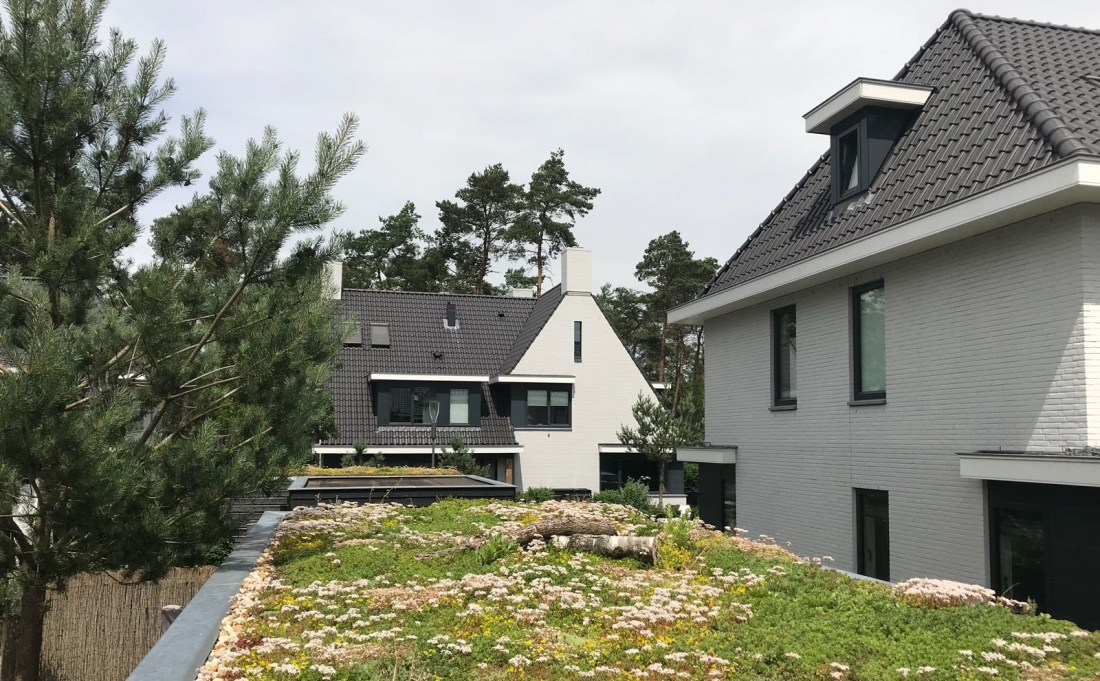Is a green roof biodiverse?
Green roofs – intensive as well as extensive – have a greater value for biodiversity than a regular roof. In 2015, in collaboration with Dutch Butterfly Conservation, Sempergreen studied biodiversity on green roofs. Three separate studies investigated whether vegetation blankets and roof substrates functionally contribute to promoting biodiversity in the urban environment, in this case of butterflies, bees and hoverflies. Butterflies place critical demands on their habitat and serve as an indicative group for a sustainable living environment. Bees and hoverflies are also important pollinators of flowering plants.
Contribution to biodiversity
Results from this research show that the vegetation blankets tested (Sedum-mix blanket, Sedum-herb blanket, Bees & Butterflies blanket) and various roof garden substrates can contribute to biodiversity. In intensively used urban and agricultural areas, a green roof with herbs and floriferous vegetation at least offer food and/or good breeding opportunities for butterflies, bees, and hoverflies that are otherwise not readily available in the vicinity.
Download a summary of the study below, if you'd like to learn more.
Avoid ecological trap
When designing and constructing a green roof, attention should be paid to the proximity of good quality breeding opportunities, either on the roof itself or nearby. It is important that the roof does not act as an ecological trap, but that is can be used as a stepping stone by mobile species on their way to other areas. The thickness of the substrate, as well as the variation in plants and vegetation structure are critical aspects to create a biodiverse roof.
Create nesting spaces, protection and a source of food with Biodiversity Package
Sempergreen has introduced a Biodiversity Package to create more biodiversity on extensive green roofs, thereby also increasing their ecological value. They provide nesting spaces, protection and a source of food. All products have been carefully selected to benefit the living environments of birds, bees, butterflies and other insects.
Biodiversity white paper
If you want to read more regarding this topic and the ways in which your project can make a positive contribution towards biodiversity, please download our whitepaper ‘Building for biodiversity’.

